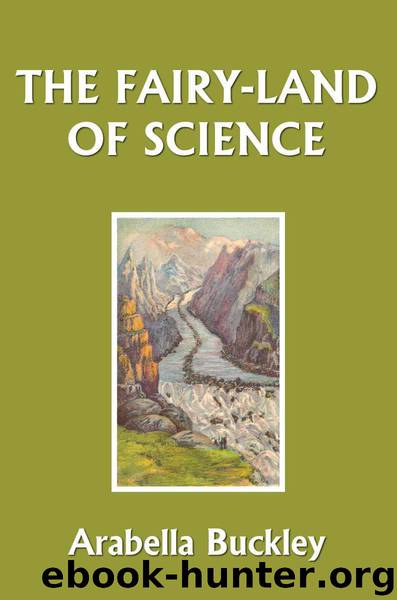The Fairy-Land of Science (Yesterday's Classics) by Buckley Arabella

Author:Buckley, Arabella [Buckley, Arabella]
Language: eng
Format: epub
Tags: Nature
ISBN: 9781599150246
Publisher: Yesterday's Classics
Published: 2010-11-08T13:38:14.356000+00:00
Cliffs off Arbroath, showing the waste of the shore
Thus, you see, the whole of the beautiful scenery of the sea—the shores, the steep cliffs, the quiet bays, the creeks and caverns—are all the work of the "sculptor" water; and he works best where the rocks are hardest, for there they offer him a good stout wall to batter, whereas in places where the ground is soft it washes down into a gradual gentle slope, and so the waves come flowing smoothly in and have no power to eat away the shore.
And now, what has Ice got to do with the sculpturing of the land? First, we must remember how much the frost does in breaking up the ground. The farmers know this, and always plough after a frost, because the moisture, freezing in the ground, has broken up the clods, and done half their work for them.
But this is not the chief work of ice. You will remember how we learned in our last lecture that snow, when it falls on the mountains, gradually slides down into the valleys, and is pressed together by the gathering snow behind until it becomes moulded into a solid river of ice. In Greenland and in Norway there are enormous ice-rivers or glaciers, and even in Switzerland some of them are very large. The Aletsch glacier, in the Alps, is fifteen miles long, and some are even longer than this. They move very slowly—on an average about 20 to 27 inches in the centre, and 13 to 19 inches at the sides every twenty-four hours, in summer and autumn. How they move, we cannot stop to discuss now; but if you will take a slab of thin ice and rest it upon its two ends only, you can prove to yourself that ice does bend, for in a few hours you will find that its own weight has drawn it down in the centre so as to form a curve. This will help you to picture to yourselves how glaciers can adapt themselves to the windings of the valley, creeping slowly onwards until they come down to a point where the air is warm enough to melt them, and then the ice flows away in a stream of water. It is very curious to see the number of little rills running down the great masses of ice at the glacier's mouth, bringing down with them gravel, and every now and then a large stone, which falls splashing into the stream below. If you look at the glacier in the Frontispiece, you will see that these stones come from those long lines of stones and boulders stretching along the sides and centre of the glacier. It is easy to understand where the stones at the side come from; for we have seen that damp and frost cause pieces to break off the surface of the rocks, and it is natural that these pieces should roll down the steep sides of the mountains on to the glacier.
Download
This site does not store any files on its server. We only index and link to content provided by other sites. Please contact the content providers to delete copyright contents if any and email us, we'll remove relevant links or contents immediately.
Crazy Rich Asians by Kevin Kwan(8875)
How to Bang a Billionaire by Alexis Hall(7924)
Little Fires Everywhere by Celeste Ng(6842)
Win Bigly by Scott Adams(6816)
Giovanni's Room by James Baldwin(6793)
Pachinko by Min Jin Lee(5420)
Tease (Temptation Series Book 4) by Ella Frank(5397)
The Fire Next Time by James Baldwin(5011)
The Perks of Being a Wallflower by Stephen Chbosky(4395)
China Rich Girlfriend by Kwan Kevin(4272)
First Position by Melissa Brayden(4261)
Bluets by Maggie Nelson(4252)
Rich People Problems by Kevin Kwan(4115)
The Sympathizer by Viet Thanh Nguyen(4083)
A Little Life (2015) by Hanya Yanagihara(4024)
Right Here, Right Now by Georgia Beers(3909)
Walking by Henry David Thoreau(3676)
Catherine Anderson - Comanche 03 by Indigo Blue(3464)
I'll Catch You by Farrah Rochon(3417)
